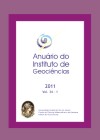Bioavailability of Organic Matter in the Superficial Sediment of Guanabara Bay, Rio de Janeiro, Brazil
DOI:
https://doi.org/10.11137/2011_1_52-63Abstract
Thirty superficial sediment samples were collected in Guanabara Bay in order to identify new trophic state and environmental quality descriptors for coastal systems. A biochemical approach was used for analyzing the quality and quantity of sedimentary organic matter and metabolic bacterial activity. The samples were analyzed for particle size; organic matter, protein, carbohydrate, lipid, biopolymeric carbon, and bioavailable carbon levels; and bacterial metabolic activity. The results show a homogeneous spatial distribution for the anaerobic bacteria web and for biopolymers (carbohydrates>;lipids>;protein). The NE area of the bay displayed sediment lipid levels above 1 mg/g, indicative of organic sewage input. Spatial distribution of the superficial sediments in relation to other variables was not significant (p>;0.05). Biopolymers and labile organic matter showed a significant correlation with the average particle size of 80% of the fine particles. Despite the availability of labile organic matter, under the form of biopolymeric carbon, only 50% of the carbon was available to the trophic web. The bacterial consortia formed by sulfate reducing and denitrifying bacteria sustain the benthic trophic food web in Guanabara Bay.Downloads
Published
2011-01-01
Issue
Section
não definida
License
This journal is licensed under a Creative Commons — Attribution 4.0 International — CC BY 4.0, which permits use, distribution and reproduction in any medium, provided the original work is properly cited.
















 Except where otherwise noted, content on this site is licensed under a license
Except where otherwise noted, content on this site is licensed under a license 